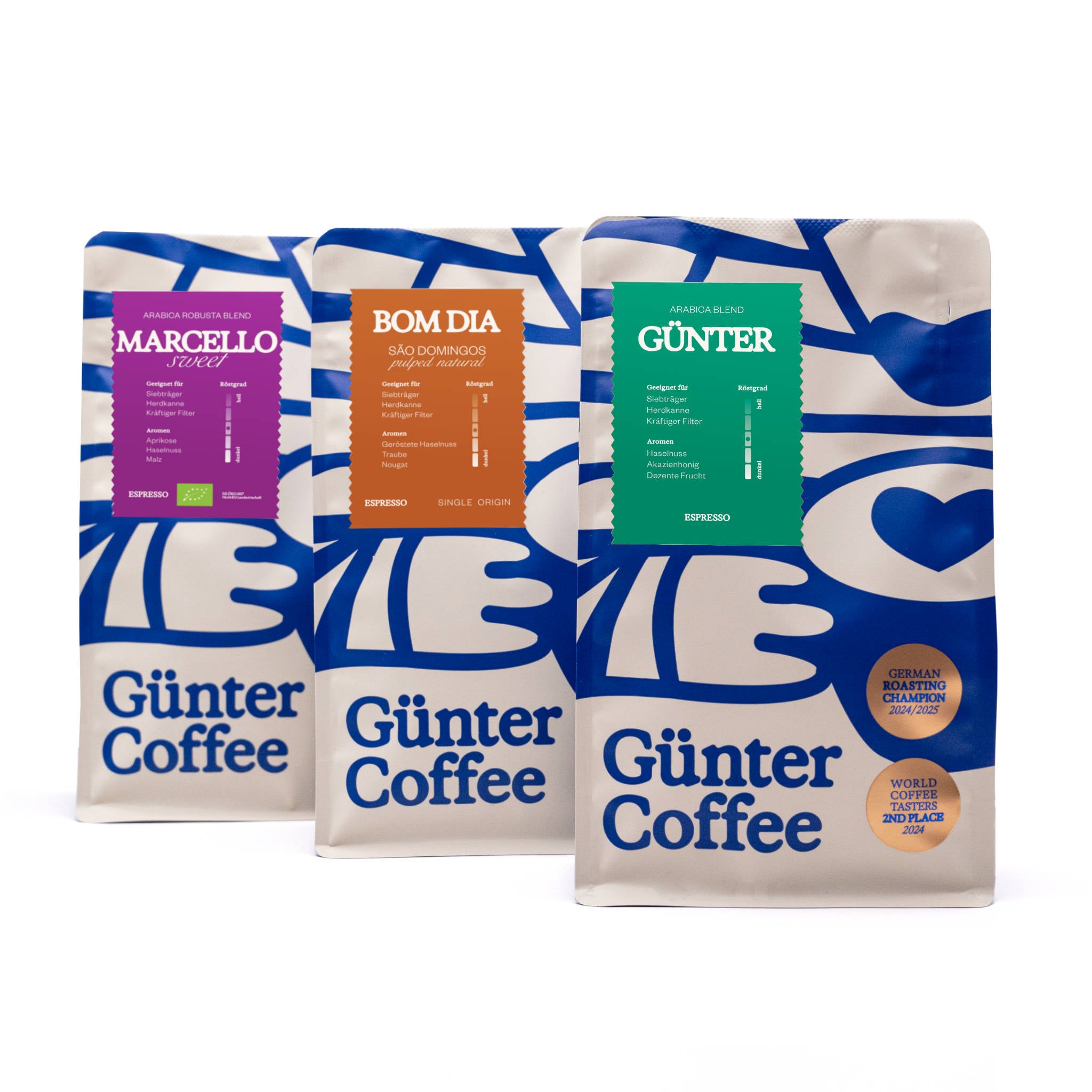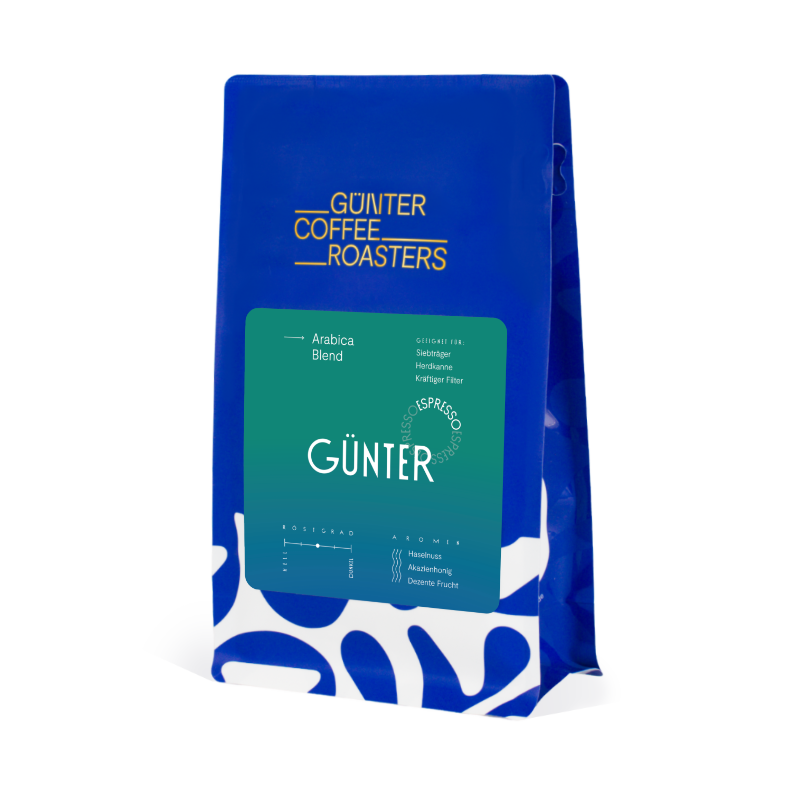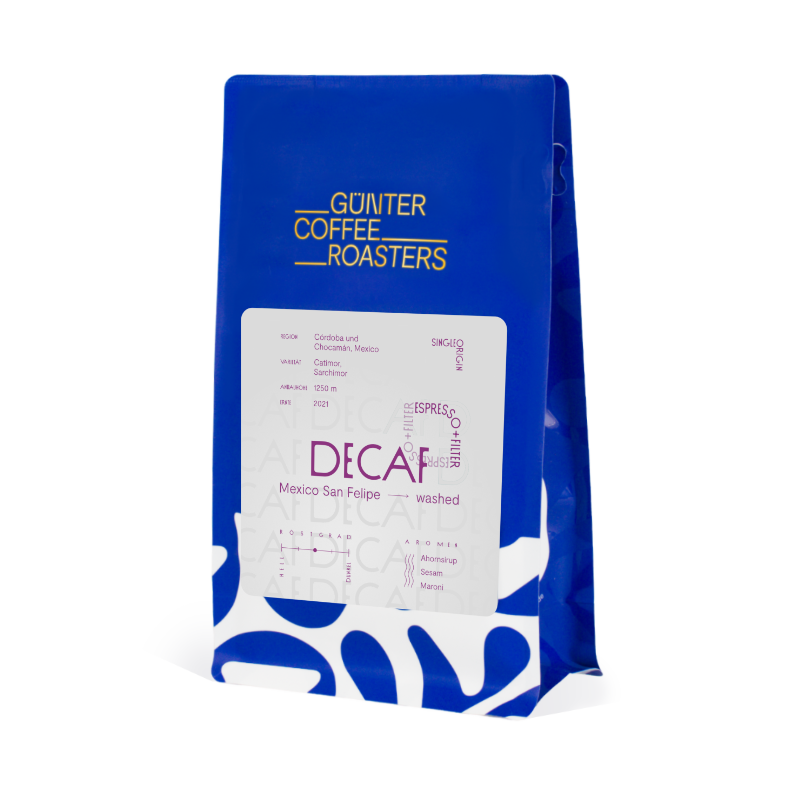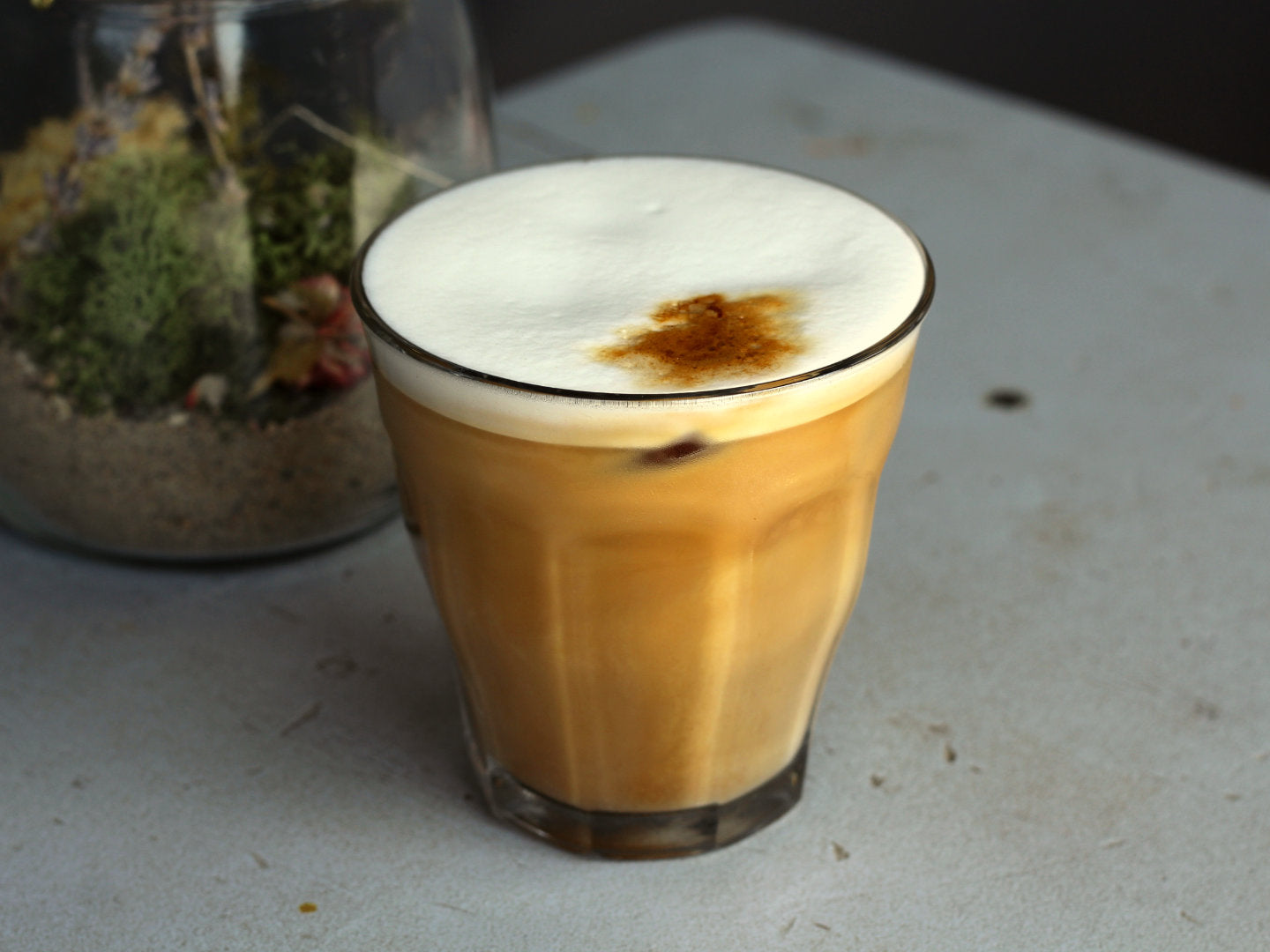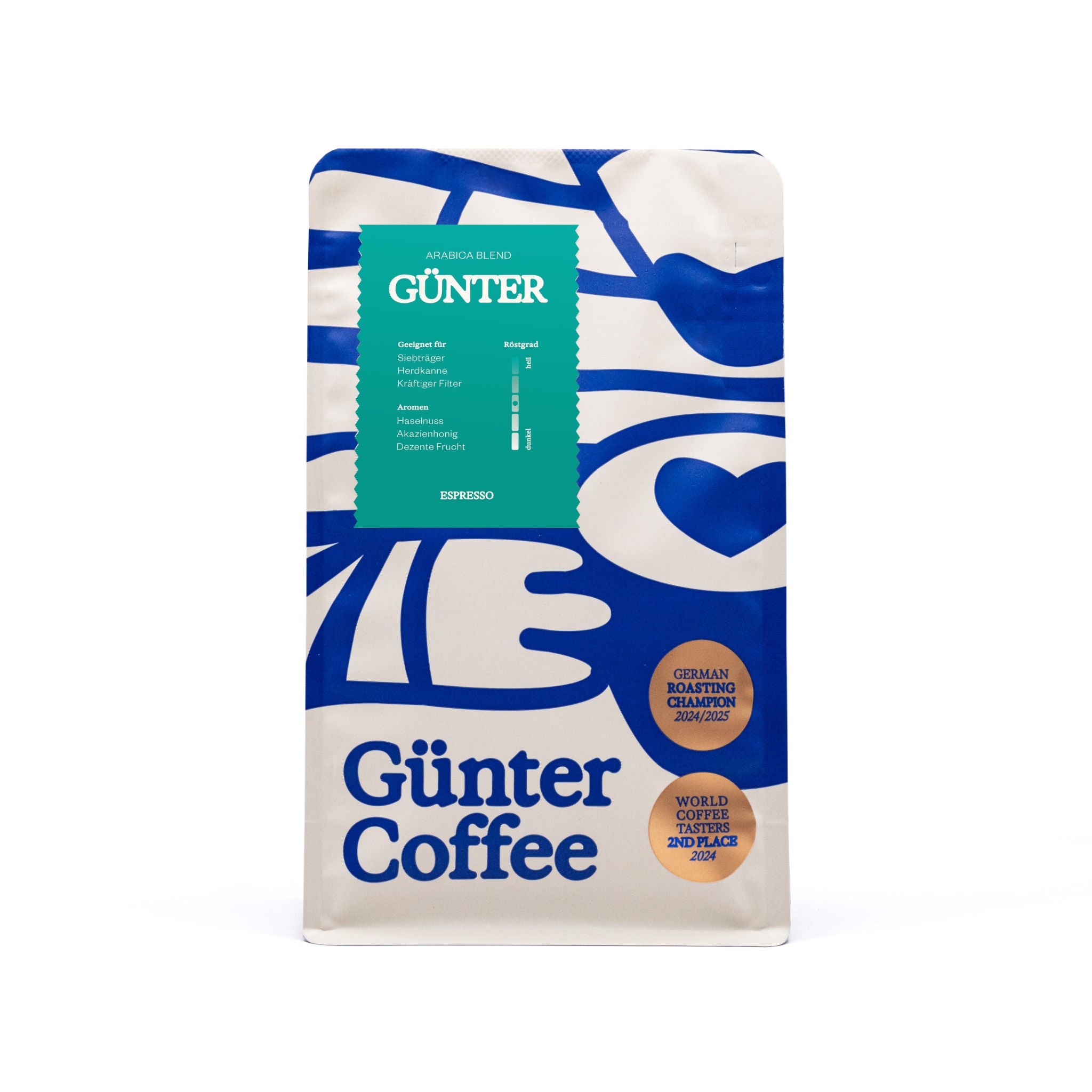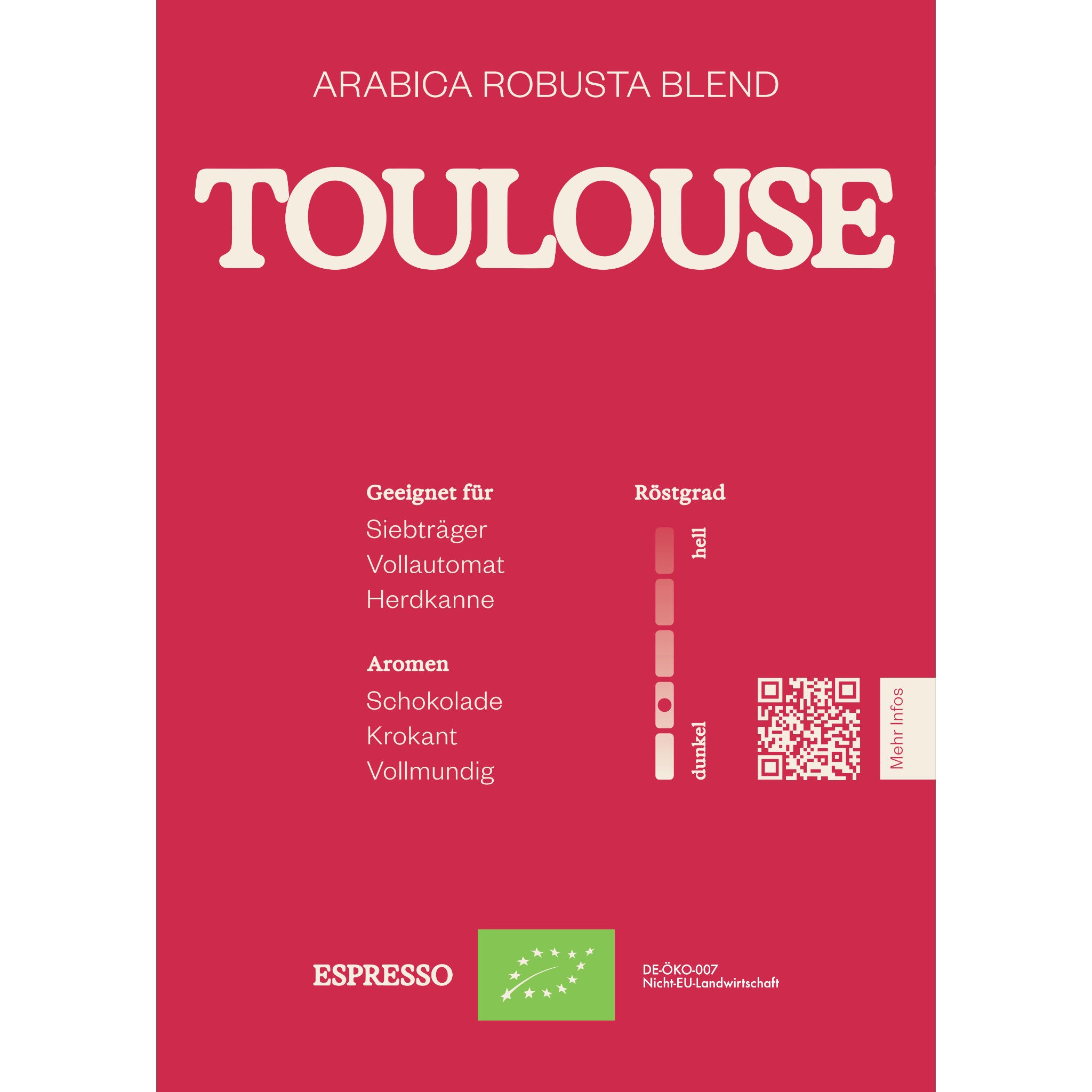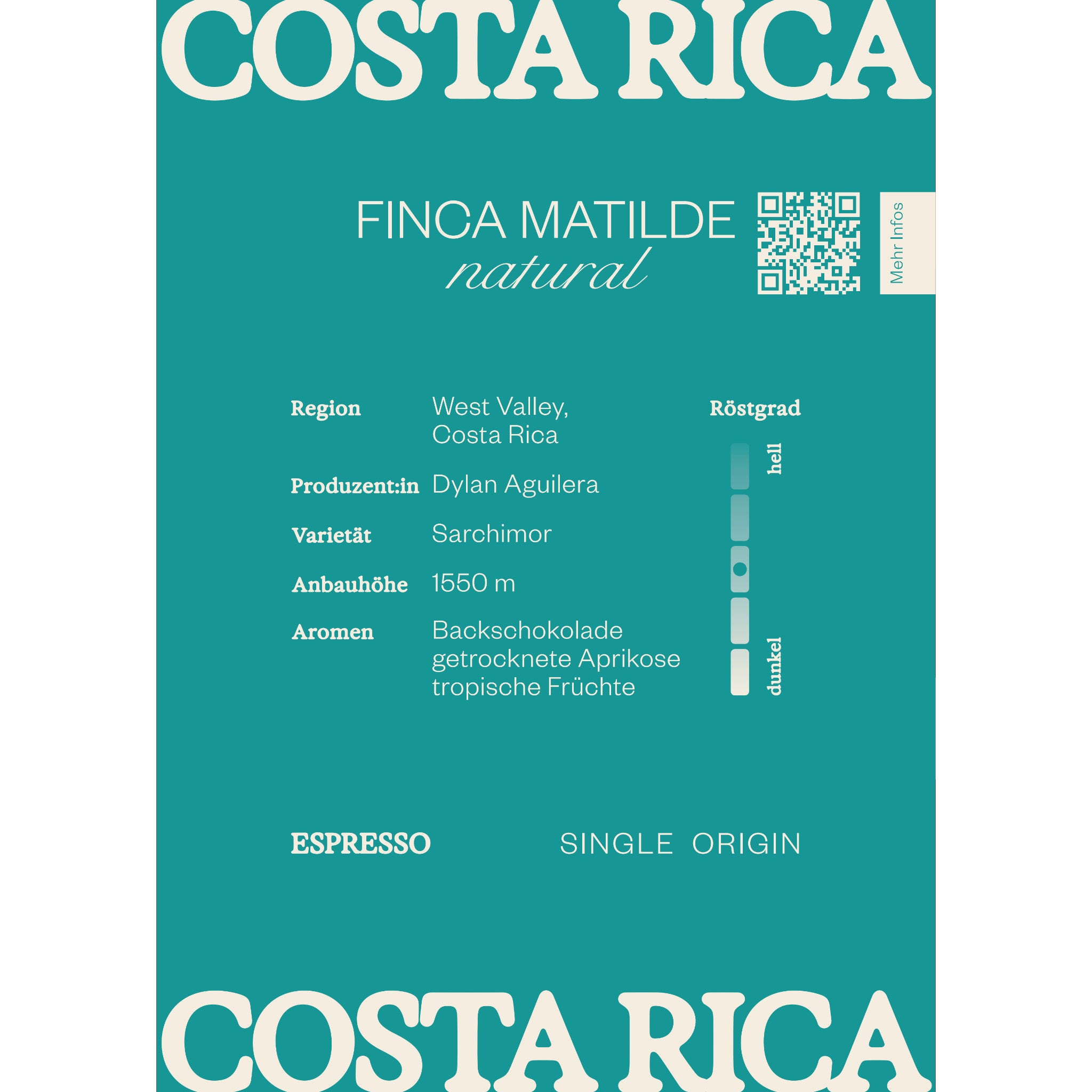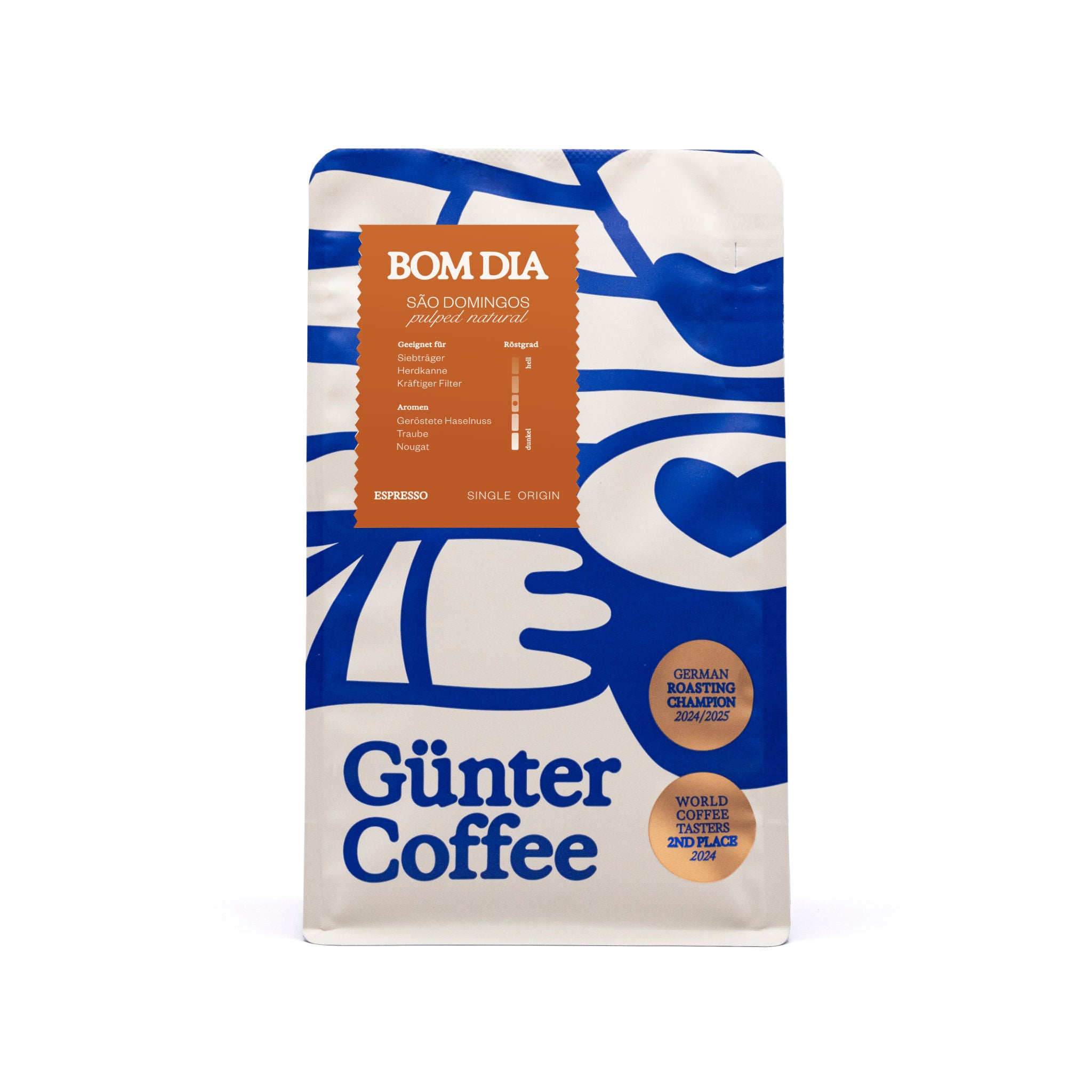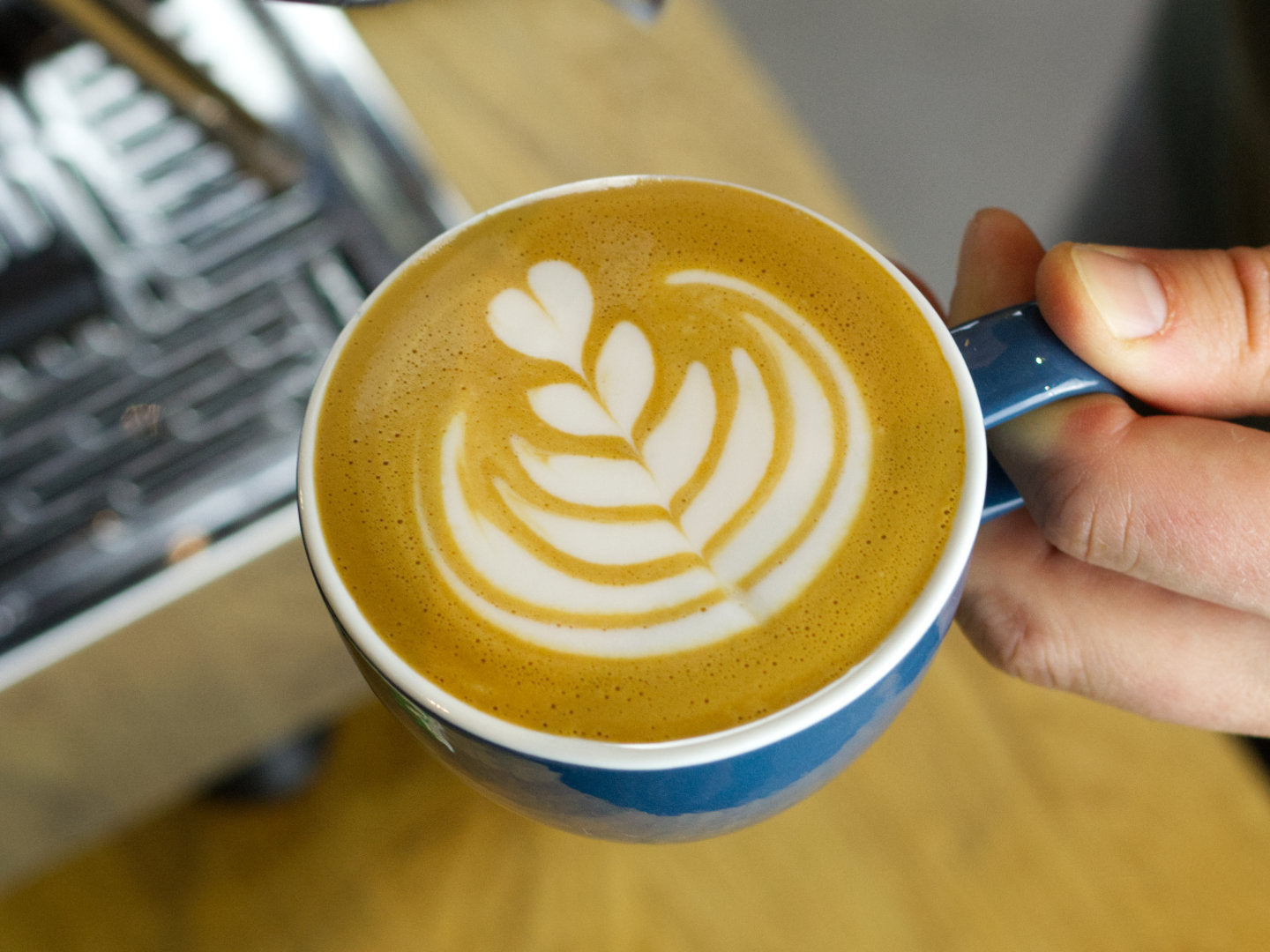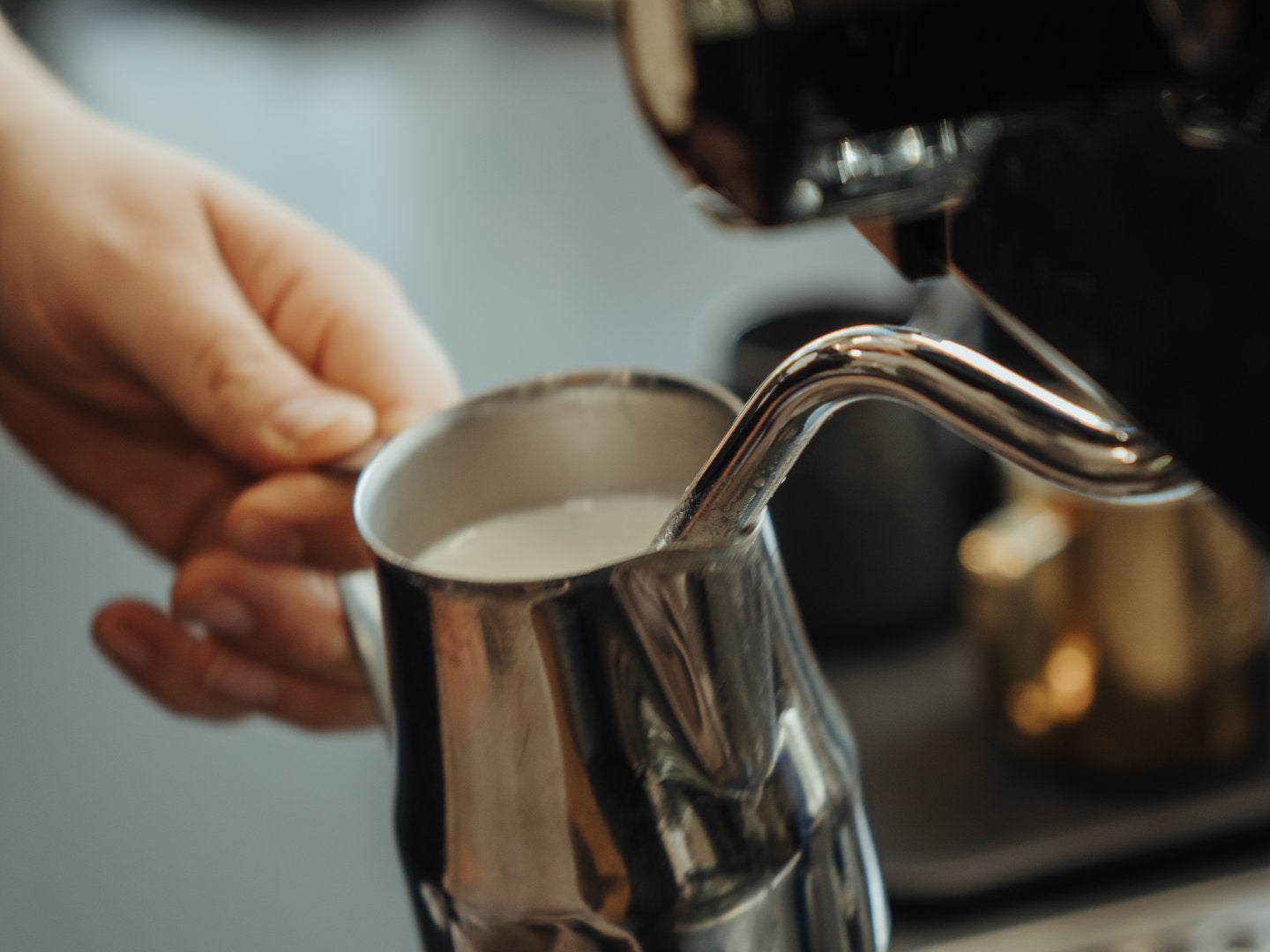To prepare a flat white, you can't avoid using a portafilter machine. A real espresso is the basis for the modern coffee drink. We'll briefly explain how to best prepare it here and in our detailed espresso brew guide.
What you need to prepare a flat white:
- Portafilter machine with steam lance
- Coffee grinder
- Coffee beans
- Tamper
- Fine scale
- Milk jug
- Milk or milk alternative (we recommend oat milk)
- Coffee pot
- Cloth
Everything there? Let's go!
What is a Flat White?
A flat white is a mixed espresso and milk drink. Exact information on the ratio of espresso and milk varies, we work with a cup with a total volume of 150 ml for 30 ml of espresso. There is worldwide agreement on the amount of espresso.
Grind coffee, prepare espresso, prepare cold milk
The basis for every Flat White is an espresso, which you take as a shortened double shot until you have 30 ml of espresso in your cup. In order to achieve an optimal result, we always use the double sieve for our espresso. We grind 18 g of coffee with the same grind as for a normal espresso and fill it into the portafilter. Don't forget to level and tame! We place a coffee cup on a scale under the portafilter. If the scale shows 29 g, we stop dispensing and wait until the coffee stops flowing. The processing time should be between 19 and 25 seconds.
After the espresso has been extracted, we take our milk jug and fill it with cold milk (up to the spout/spout). We then open the steam lance for a brief moment to drain the condensation. Now we are ready to froth the milk.
Froth milk for Flat White
We position the head of the steam lance below the surface of the milk and open the steam tap completely. Pay attention to the order, otherwise the milk will splash out of the jug. We grasp the front of this with one palm and hold it by the handle with the other hand.
The drawing phase begins and the first milk foam forms. We draw air into the milk and move the jug slightly downwards so that part of the steam wand head becomes visible. A scratching noise is made as the jug noticeably warms up.
This is followed by the rolling phase, in which the foam is compacted. We move the jug slightly upwards so that the head of the steam lance goes back under the surface of the milk while the milk is compressed in a rotating manner. As soon as the jug gets hot and it becomes uncomfortable to hold, we close the steam tap and put the milk jug aside. The milk should be at a temperature of around 65°C.
We now clean the steam wand of any milk residue with a cloth, as milk dries quickly. It's best to do this immediately after foaming. We briefly open the steam tap while holding the cloth under the lance head to remove any milk residue in the lance. The hot steam helps to clean the lance without leaving any residue.
We then take the milk jug and tap it on the work surface to remove any large foam bubbles. Then we swirl it to keep the milk foam homogeneous.
To ensure that milk frothing is successful, we pay attention to: the position of the steam head in the milk, the angle of the jug and the angle of the jug in relation to the steam wand. The following four tips will help:
- Orient the steam wand so that it is facing you and at a 45° angle.
- Position the jug so that the steam head is in the middle of the milk.
- Tilt the bottom of the jug slightly to the left.
- The steam head should now be about ⅓ away from the right edge of the jug.
Mix milk and espresso
To ensure that the espresso has a balanced taste and a nice velvety texture, there are also a few things to consider when pouring the milk. After we have frothed our milk, we take the espresso cup and hold it at a slight angle, either by the base of the cup or by the handle. We then pour the milk at an angle of 90 degrees to the handle.
Meanwhile, we make sure that the spout of the milk jug is about a hand's width away from the cup and that a constant, thin stream of milk is created. This means that the milk foam stays under the crema of the espresso and the crema retains its beautiful color. To distribute the milk evenly, we make circular movements while pouring until the cup is filled. The milk foam disappears under the crema of our espresso. And voilà, the flat white is ready!
If you are interested in latte art and want to know how to decorate your flatty with a heart, read our blog article on latte art.
Instructions for Iced Flat White
On warm days, the Flat White can also be wonderfully combined with ice cream. To do this we proceed as follows:
- We put three to four ice cubes, preferably whole ice, into a 250 ml glass and fill it two-thirds full with cold milk.
- Now we pour 30 g of espresso into a shot pot and foam our milk as described above.
- We now slowly pour the foamed milk into the glass so that a nice head of foam is created at the top.
- We then add the freshly made espresso from the shot pot. We make sure that we pour it slowly over one of the ice cubes so that it is distributed under the milk foam.
- The Flat White on ice is ready!
Where does Flat White come from?
The Flat White has only been represented on the world coffee stage for a relatively short time. In contrast to classics like the Italian cappuccino, it comes from Australia or New Zealand, where a considerable coffee culture has developed in the last few decades. In New Zealand, Mats also discovered his passion for coffee when he worked in a third-wave café for a few months.
Australians and New Zealanders disagree on which island, in which city and in which year the Flat White was first drunk and offered. The focus is mainly on the 1970s and 80s. In 2015, coffee giant Starbucks introduced Flat White to its lineup in some places, making it available to a wider audience.
Where does Flat White get its name from?
The name of the Flat White describes the thin layer of milk foam on the coffee drink. Unlike espresso, less milk is used for flatty, as it is often referred to in the coffee scene. Especially in the countries of origin, Australia and New Zealand, the milk for the Flat White is frothed for a shorter time. The milk is therefore much more liquid and less foamy. This results in only a thin layer of milk foam at the end.
